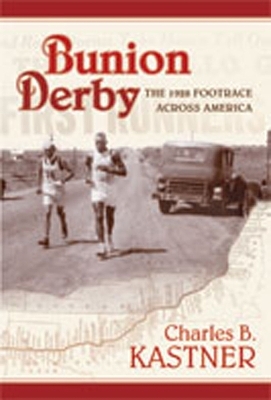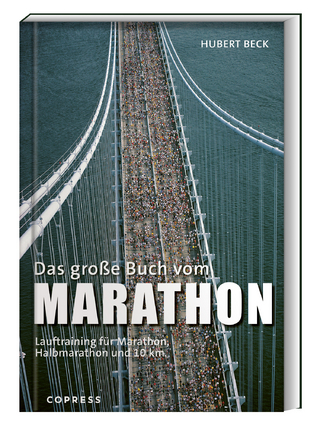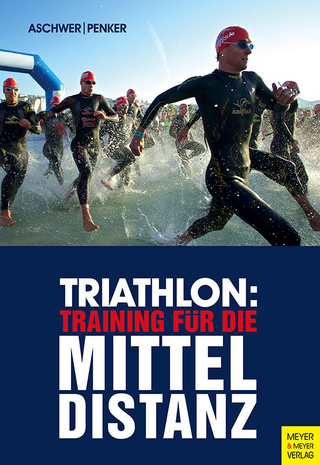
Bunion Derby
The 1928 Footrace Across America
Seiten
2007
University of New Mexico Press (Verlag)
978-0-8263-4301-7 (ISBN)
University of New Mexico Press (Verlag)
978-0-8263-4301-7 (ISBN)
On March 4, 1928, 199 men lined up in Los Angeles, California, to participate in a 3,400-mile transcontinental footrace to New York City. The Bunion Derby, as the press dubbed the event, was the brainchild of sports promoter Charles C Pyle. He promised a $25,000 grand prize and claimed the competition would immortalize US Highway Route 66.
On March 4, 1928, 199 men lined up in Los Angeles, California, to participate in a 3,400-mile transcontinental footrace to New York City. The Bunion Derby, as the press dubbed the event, was the brainchild of sports promoter Charles C. Pyle. He promised a $25,000 grand prize and claimed the competition would immortalize U.S. Highway Route 66, a 2,400-mile road, mostly unpaved, that subjected the runners to mountains, deserts, mud, and sandstorms, from Los Angeles to Chicago. The runners represented all walks of American life from immigrants to millionaires, with a peppering of star international athletes included by Pyle for publicity purposes. For eighty-four days, the men participated in this part footrace and part Hollywood production that incorporated a road show featuring football legend Red Grange, food concessions, vaudeville acts, sideshows, a portable radio station, and the world's largest coffeepot sponsored by Maxwell House serving ninety gallons of coffee a day. Drawn by hopes for a better future and dreams of fame, fortune, and glory, the bunioneers embarked on an exhaustive and grueling journey that would challenge their physical and psychological endurance to the fullest while Pyle struggled to keep his cross-country road show afloat.
On March 4, 1928, 199 men lined up in Los Angeles, California, to participate in a 3,400-mile transcontinental footrace to New York City. The Bunion Derby, as the press dubbed the event, was the brainchild of sports promoter Charles C. Pyle. He promised a $25,000 grand prize and claimed the competition would immortalize U.S. Highway Route 66, a 2,400-mile road, mostly unpaved, that subjected the runners to mountains, deserts, mud, and sandstorms, from Los Angeles to Chicago. The runners represented all walks of American life from immigrants to millionaires, with a peppering of star international athletes included by Pyle for publicity purposes. For eighty-four days, the men participated in this part footrace and part Hollywood production that incorporated a road show featuring football legend Red Grange, food concessions, vaudeville acts, sideshows, a portable radio station, and the world's largest coffeepot sponsored by Maxwell House serving ninety gallons of coffee a day. Drawn by hopes for a better future and dreams of fame, fortune, and glory, the bunioneers embarked on an exhaustive and grueling journey that would challenge their physical and psychological endurance to the fullest while Pyle struggled to keep his cross-country road show afloat.
Charles B. Kastner lives in Seattle, Washington, and has published numerous articles in Northwest Runner and Marathon and Beyond magazines. This is his first book.
| Erscheint lt. Verlag | 30.10.2007 |
|---|---|
| Zusatzinfo | 27 halftones |
| Verlagsort | Albuquerque, NM |
| Sprache | englisch |
| Gewicht | 546 g |
| Themenwelt | Sachbuch/Ratgeber ► Sport ► Leichtathletik / Turnen |
| Geisteswissenschaften ► Geschichte | |
| ISBN-10 | 0-8263-4301-5 / 0826343015 |
| ISBN-13 | 978-0-8263-4301-7 / 9780826343017 |
| Zustand | Neuware |
| Haben Sie eine Frage zum Produkt? |
Mehr entdecken
aus dem Bereich
aus dem Bereich
Lauftraining für Marathon, Halbmarathon und 10 km
Buch | Softcover (2023)
Copress (Verlag)
26,00 €
von Bewegungsgrundformen mit Spiel und Spaß zu Basisfertigungen
Buch (2024)
Meyer & Meyer (Verlag)
29,95 €


